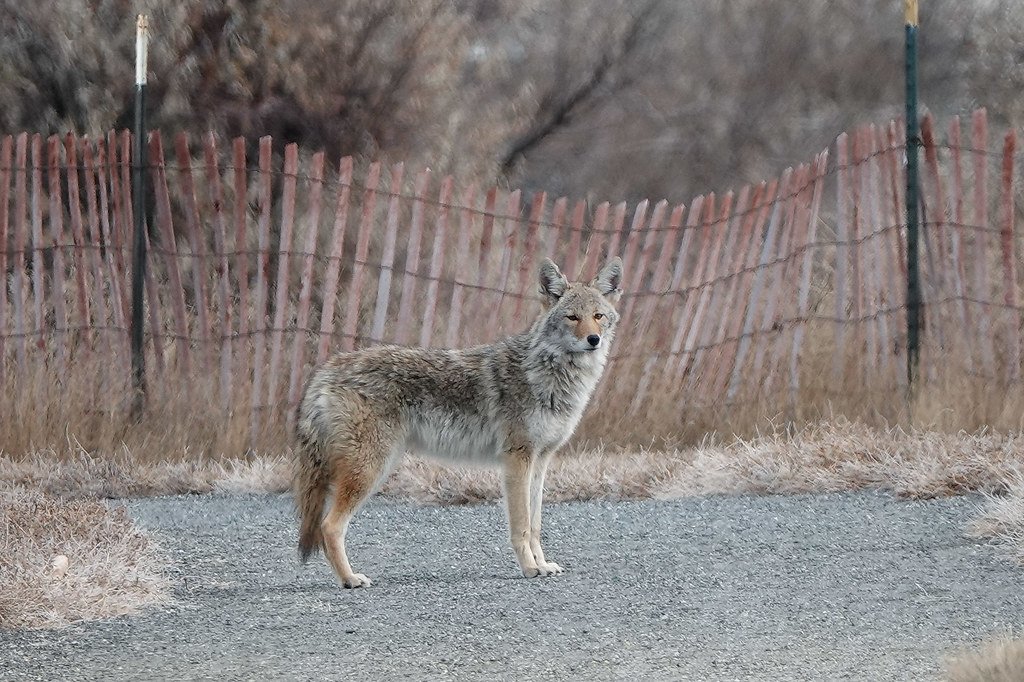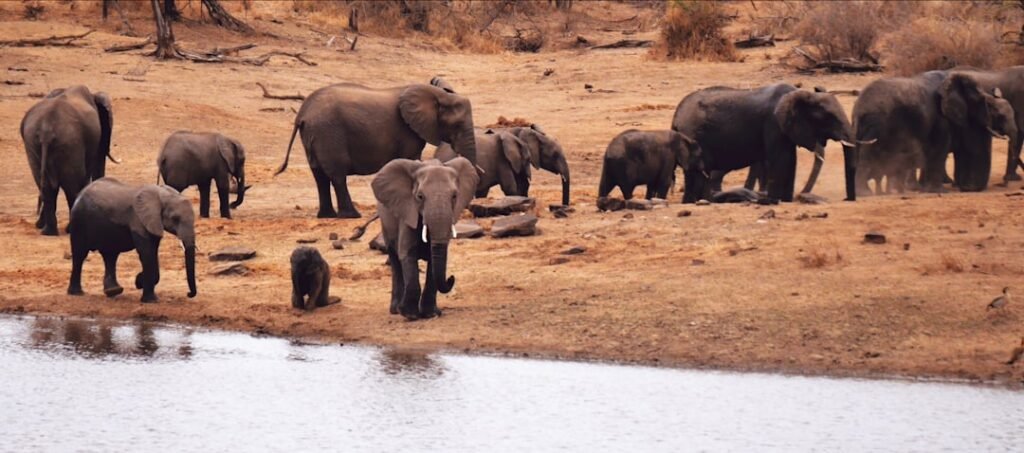You might think a GPS collar is the perfect tool to track wild coyotes, right? Think again. Recent research reveals something startling: these remarkably adaptable canines are finding ways to work around the very technology designed to monitor them.
Scientists have discovered that coyotes across North America are displaying increasingly sophisticated behaviors that challenge traditional tracking methods. From subtle adjustments in their daily patterns to more dramatic territorial shifts, these animals are proving once again why they’ve earned their reputation as one of nature’s most resilient species. Let’s dive into the fascinating world of how coyotes are adapting to our modern surveillance efforts.
The Surprising Intelligence Behind Collar Awareness

When researchers deploy traps to capture coyotes for collar placement, they’re often astonished by what their cameras reveal. You can watch coyotes approach the traps cautiously, circling them multiple times, yet somehow never getting close enough to trigger the capture mechanism. This behavior suggests these animals possess an remarkable understanding of human-made devices.
Wildlife experts have extensively studied GPS collars for monitoring purposes, designing them to be incredibly lightweight with little to no impact on animal health and behavior. For coyotes specifically, there have been no documented long-term adverse effects from tracking collars. Yet something about these devices seems to register in the minds of these intelligent predators.
Nocturnal Shifts and Human Avoidance Patterns

Research has revealed a striking pattern: coyotes in urban areas confine most of their activity to nighttime hours, while their counterparts in natural areas tend to be active during the day or at dawn and dusk. This behavioral shift represents one of their most effective strategies for avoiding human detection and the tracking efforts that come with it.
Scientists believe this switch to nocturnal activity patterns serves as an adaptive response that allows coyotes to minimize contact with humans, reducing risks associated with encounters while still allowing them to exploit urban environments. However, individual coyotes vary in their responses to human activity, and their reactions to people may depend on how well they can habituate to humans or find shelter from them.
Territory Expansion as an Evasion Strategy

Previous coyote research focused on areas that were far too small, typically covering just one hundred to one hundred fifty square miles. One collared coyote in North Carolina reportedly traveled several hundred miles from its original capture location. This massive range expansion makes traditional monitoring methods virtually useless.
In urban areas like Cook County, pack coyotes generally maintain smaller territories, while solitary coyotes typically range over larger areas. Unlike resident coyotes, transient individuals don’t confine themselves exclusively to natural fragments. This territorial flexibility gives them a significant advantage in avoiding concentrated tracking efforts.
Pack Dynamics and Collar Replacement Behaviors

When one member of a breeding pair dies, the social structure doesn’t collapse as you might expect. Instead, another coyote steps in to fill that void within weeks, sometimes even days. This rapid replacement means that removing a collared individual from the population has minimal long-term impact on the pack structure.
Coyote territories function like puzzle pieces, with ranges that rarely overlap. When one coyote ventures into another’s territory, fighting occurs. Transient coyotes must carefully avoid areas marked with scent, forcing them to snake their way around looking for their own range while staying out of scent-heavy areas.
Food Source Manipulation and Human Dependency

Since researchers began studying island coyotes in 2005, they’ve consistently found that the most important food resources for study animals are actually provided by people. This means these resources remain within human control, and consequently, coyote populations can also be managed through food availability.
Recent camera collar studies in Atlanta revealed that seven out of eight tracked coyotes maintained primarily natural diets, with only one individual consuming mostly human-discarded waste. This dietary flexibility allows them to adapt their foraging patterns based on collar placement and monitoring intensity in different areas.
Technical Limitations Coyotes Exploit

GPS collars operate on programmed intervals, with settings typically ranging from minutes to hours between location fixes. Smart coyotes seem to have figured out these timing patterns, adjusting their movement schedules accordingly.
Data recovery requires researchers to either recapture the animal for USB download or use wireless systems with limited range up to five hundred meters. Remote data download can be triggered automatically by base stations, but only when animals remain within range. Coyotes that venture beyond these technical boundaries effectively disappear from monitoring systems.
Seasonal Behavioral Adaptations

During snow-free seasons, coyotes spend approximately thirty-one percent of their time in stationary positions, roughly seven and a half hours daily. However, during snowy periods, they increase this to forty percent of their time. These seasonal shifts in activity patterns can confuse GPS tracking systems that rely on movement data to interpret behavior.
Movement behavior analysis using GPS collars recording every two hours shows distinct patterns during different time periods. When classified as stationary, coyotes average just seven meters of movement with a range of zero to twenty-nine meters. Such minimal movement can make it extremely difficult for researchers to locate and monitor specific individuals.
Collar Malfunction and Removal Incidents

Multiple coyotes tagged with GPS trackers in the Marin Headlands area have been found dead on Highway 101. Human feeding patterns may encourage coyotes to spend more time in developed areas where vehicle strikes become more likely.
Modern tracking collars feature wireless detachment capabilities that activate when the monitoring period ends or if a coyote dies. These collars also include automatic drop-off functions that release after two years, ensuring animals don’t wear depleted devices indefinitely. However, some coyotes have learned to remove or damage their collars through environmental factors or deliberate behavior.
Long-Distance Migration Patterns

Research that began in Louisiana and moved to northeastern North Carolina in 2009 revealed critical insights about coyote movement patterns. Previous studies had focused on areas far too small to capture the true scope of coyote behavior, typically examining only one hundred to one hundred fifty square miles.
Recent studies show that resident coyotes generally maintain smaller home ranges than transient individuals, who cover much larger areas. Seasonal variations show resident ranges remaining relatively stable, but transient ranges may fluctuate significantly between seasons. This mobility makes consistent tracking nearly impossible using traditional methods.
Future Implications for Wildlife Management

Atlanta has become an ideal location for testing new camera collar technology, with plans to use findings for education and outreach to reduce non-conflict wildlife reports. Initial results have generated significant public interest, leading to over twenty news articles and television appearances, with social media campaigns planned for early 2025.
Scientists have developed Best Management Practices for Coexistence with Coyotes, essentially creating a toolbox for safe and sustainable community coyote management. Researchers are working with towns to adopt these practices and potentially become the first communities to successfully manage coyotes sustainably. The challenge lies in staying ahead of these remarkably adaptive animals who continue to evolve new strategies for evading our monitoring efforts.
The remarkable adaptability that has allowed coyotes to expand from their original western habitats to virtually every major North American city now extends to their interactions with modern tracking technology. Their ability to adjust behavioral patterns, exploit technical limitations, and maintain flexible territorial strategies demonstrates an intelligence that continues to surprise researchers. As we develop more sophisticated monitoring tools, these resilient canines seem to stay one step ahead, proving that in the ongoing dance between human technology and animal adaptation, the coyotes are far from ready to concede defeat.
What do you think about these clever canines and their ability to outsmart our best tracking efforts? Share your thoughts in the comments below.

Hi, I’m Andrew, and I come from India. Experienced content specialist with a passion for writing. My forte includes health and wellness, Travel, Animals, and Nature. A nature nomad, I am obsessed with mountains and love high-altitude trekking. I have been on several Himalayan treks in India including the Everest Base Camp in Nepal, a profound experience.




